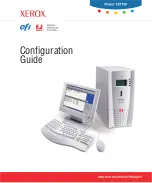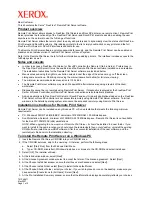
Leadership enterprise server with significantly lower cost of ownership in a highly available and
expandable, rack-dense, 2U dual-socket server
Please see the Legal Information section for important notices and information.
9
power supply also contains a fan.
The system contains
three cooling zones
.
Zone 1
(incorporating one fan pack) cools all 16
DIMM sockets,
Zone 2
(one fan pack) cools the primary processor, and
Zone 3
(one fan pack)
cools the second processor.
The fans automatically adjust speeds in response to changing thermal requirements depending
on the zone and internal temperatures. When the temperature inside the server increases, the
fans speed up to maintain the proper ambient temperature. When the temperature returns to a
normal operating level, the fans return to their default speed. In addition, the
Bosch BMP085
altimeter
works in conjunction with IMM to govern fan rotation.
At high altitudes the air is thinner
and doesn’t cool as well as at lower elevations. In most servers, the fans run fast all the time to
allow for use at high elevations, wasting power. The altimeter allows the IBM fans to run at lower
speeds at lower altitudes.
Why not simply run the fans at 100% capacity all the time? For several good reasons: to reduce
the ambient noise, reduce the wear-and-tear on the fans and reduce the server power draw. The
reduction in ambient noise and power draw may be relatively minor for a single server, but put
dozens or hundreds in a data center and it can make a big difference!
In addition, the server uses
hexagonal ventilation holes
in the chassis. Hexagonal holes can be
grouped more densely than round holes, providing greater airflow through the system cover.
This cooling scheme is important because newer, more powerful processors generate a
significant amount of heat, and heat must be controlled for the system to function properly.
There are temperature sensors on the planar placed to sense DIMM exhaust temperature
,
SAS
HDD exhaust temperature, and CPU2 exhaust temperature (through the altimeter).
Light Path Diagnostics
Light path diagnostics enables a technician to quickly identify and locate a failed or failing system
component, such as a specific fan or memory DIMM. This enables quick replacement of the
component, which helps increase server uptime and lower operating costs.
The front of the server has an LED indicator light to show possible component failures. If the front
LED indicates an error condition, by pressing a button on the front of the server an LED panel will
pop out and drop down for easy viewing without the need to open the server cover or remove the
server from the rack. The light path diagnostics panel tells the servicer which component requires
attention. In addition, many components have their own identifying LEDs. For example, each of
the memory modules has an LED next to the socket, as do both processors, all adapter slots, all
fans, all power supplies, the voltage regulator module and the service processor, allowing the
servicer to easily identify exactly which component needs servicing. By following the “light path,”
the component can be replaced quickly, and without guesswork. (
Note:
In the event of a failed
DIMM, the system will restart and mark the DIMM as bad while offline, thus allowing the system
to continue running, with reduced memory capacity, until serviced.)
Hot-Swap/Redundant Components
System availability is maximized through the extensive use of hot-swap and redundant
components, including:
•
Redundant memory protection
(with
Chipkill
protection, and
memory mirroring
enabled)
•
Hot-swap, redundant hard disk drives
(with
RAID
protection)
•
Hot-swap, redundant power supplies
•
Hot-swap, redundant cooling fan modules
Other Features
•
Five USB 2.0 ports
— Provides flexibility to add high-speed external devices. The USB 2.0
specification supports up to 480Mbps transfer rates. (
Note:
Not all USB 2.0 devices are
capable of achieving this rate.) Two ports are provided on the front of the server, two on the
back, plus one USB connector reserved for an internal USB flash memory key containing an
embedded hypervisor. For pre-boot and normal drive use, use the external ports.
•
Embedded hypervisor
(via USB connector on the motherboard) — Activated with an optional
2GB USB key for supporting VMWare ESXi for virtualization.
•
Virtual Media Key
— This optional full-function systems management adapter adds local and
remote management functions without consuming a valuable adapter slot.
•
Dual video ports
— A
Matrox G200eV
SVGA video controller provides up to
1024x768
resolution, with a color depth of
32
bits at
85Hz
refresh rate. To simplify local systems
management,
one
video port is provided on the front of the unit and
one
on the back.
•
Toolless slides
— Allows quick rack installation and quicker upgrade and servicing of the
server.






































